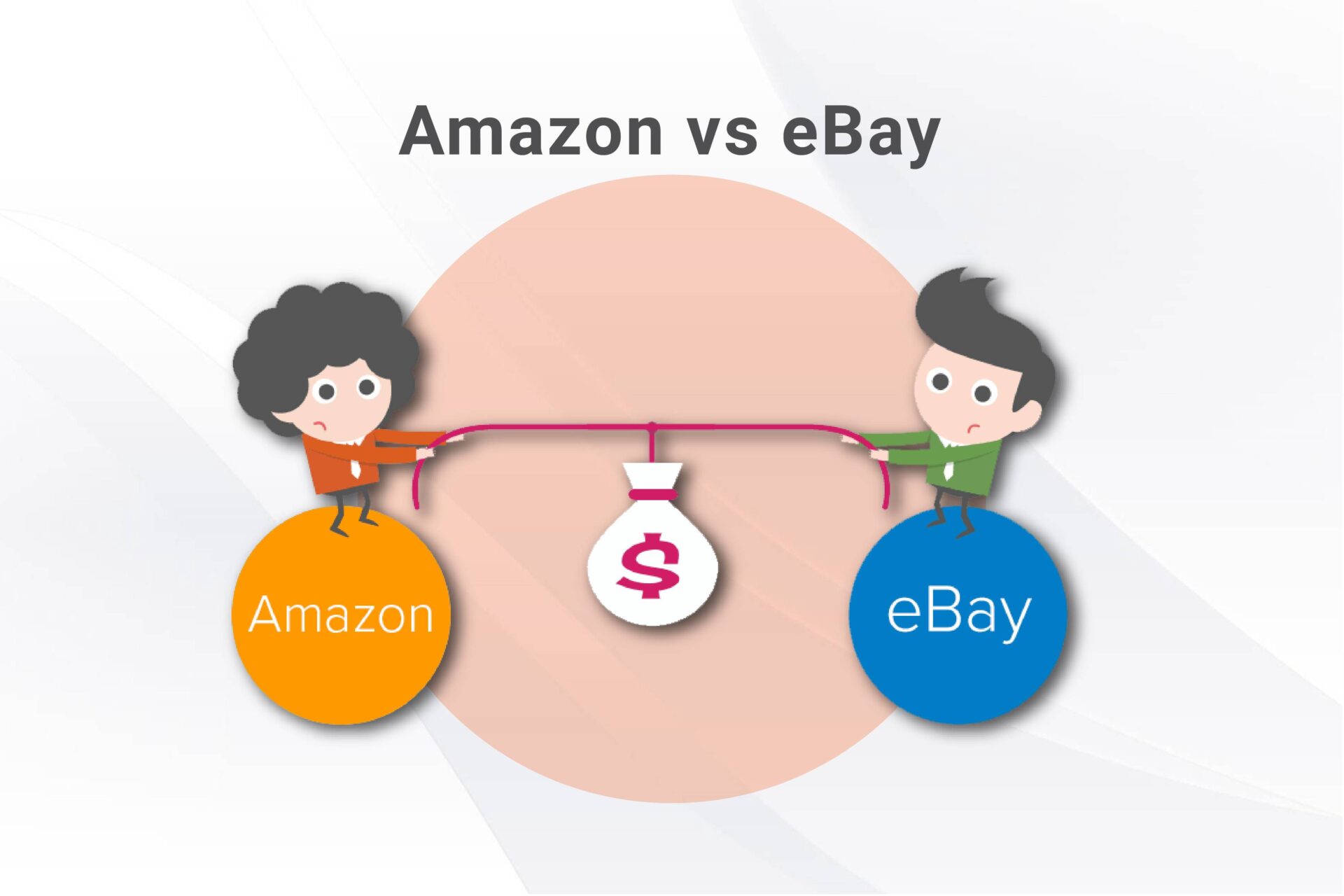
Selling on Amazon vs. eBay – A Comparative Guide
Whether you are a seasoned seller or a newbie just stepping into the eCommerce world, the question of whether you should be selling on Amazon or eBay must have crossed your mind at some point.
Like most things in life, the answer to this tricky question is not easy. While we recommend diversifying your marketplace by selling on Amazon and eBay together, the debate is still quite relevant.
It helps you decide which of these giant platforms you should start with or which should be your primary focus, given the features and specs of your products, business model, or target customer base.
In this article, we will compare Amazon and eBay across several parameters to help you decide which one is best for you. So without any further delay, let’s get started.
Main Difference between Amazon and eBay
Business Model
- First, let’s look at what sets these two platforms apart regarding business models.
- Pricing: Both platforms Amazon and eBay, have a fixed-price model. However, eBay also allows for an auction format, which used to be it’s only pricing mode back when it started.
- Competing with the platform: eBay serves only as a marketplace and allows third-party sellers to list their products on its platform. While Amazon, on the other hand, has its own products – Amazon Essentials – listed on its platform, alongside listings of private label sellers and others.
- Restrictions: There are lesser restrictions on eBay than on Amazon. This means that you can easily offer more products to buyers on eBay.
Competition
Both platforms are at the top of the eCommerce business and offer significant competition to the sellers. Some sellers might price their products low to sell more quantities.
In contrast, others may market their product as having higher quality and thus sell it at higher prices. The critical thing to remember is that you do not enter into a price race on either platform, as it can cause a loss in the long run.
However, one aspect would give eBay a bit of an edge when measuring the level of competition on both sites. Amazon lists its own branded products alongside those from third-party sellers, which provides sellers with tough competition to sell their products in that niche. On the other hand, eBay provides a marketplace for others without selling its own branded products.
Customer Loyalty
There is no denying that both of these platforms enjoy massive outreach on a global level. eBay, however, takes the lead in terms of global outreach. as it generates a significant portion of its revenue from international markets.
Both of these marketplaces appeal to different customer bases. For instance, generally, the buyers on Amazon tend to be wealthier people who are married, have families, and have a higher education.
Similarly, around 54% of eBay shoppers tend to be male. However, in isolation, these stats may not give you any meaningful comparison. Some buyers would be loyal to one platform, while others would be willing to switch to another if they got a good deal.
The point to take home is that you need to understand your target customer base. Once you have done that, you should see where you will most likely find the people interested in your products.
Read More: Amazon Handmade vs Etsy: Which one is the Better Platform?
Profitability
How much revenue you generate and how much profit you make depend on various factors, including product pricing, shipping and handling costs, market competition, and product demand. Both Amazon and eBay offer opportunities for profitability, but it is up to the seller to make the most of them.
Amazon tends to offer a higher average selling price, which may result in higher profits, but it also charges higher fees for listing and selling products. On the other hand, eBay charges lower fees, but the average selling price is usually lower.
Ultimately, profitability will depend on the specific products being sold and the seller’s strategy. Both platforms have their pros and cons, and it’s up to the seller to determine which one will work best for them based on their business goals and products.
As we have discussed, profitability is more related to product research, and for this stance, you can look for market research experts like SPCTEK.
Ease of doing business
When it comes to restrictions and regulations, eBay beats Amazon by a significant margin. eBay’s policies for listing are much simpler than Amazon’s. Speaking of gated and ungated categories, Amazon, once again, has more regulations than eBay.
However, Amazon has got a fantastic order fulfillment scheme in the form of FBA (Fulfillment by Amazon). In FBA service, Amazon picks, packs, and ships items to customers, making selling on Amazon a lot easier and hassle-free of doing business for the sellers.
Final Thoughts
The bottom line is that there are many differences between selling on Amazon and eBay. You need to decide which platform suits your business the most and where you should start. Once you have established yourself on one platform, it is always a good idea to branch out to the other platforms. If you are planning on starting your journey as a seller on Amazon or eBay, SPCTEK is here to help you with that. We excel at providing premium services for complete account management for Amazon and eBay. We will be happy to help you get started on a new path in eCommerce.
FAQ’s
New, branded products with fixed prices tend to perform well on Amazon due to its customer base seeking convenience and reliability. eBay is well-suited for unique, vintage, collectible, or niche products, as well as used items and auctions.
Both platforms have buyer protection programs, but their return policies and processes may vary. Amazon typically has stricter return policies and offers A-to-Z Guarantee protection for buyers. eBay allows sellers to set their own return policies, with options for returns within specified timeframes and conditions.
Yes, many sellers utilize both Amazon and eBay simultaneously to reach different audiences and diversify their sales channels. However, managing inventory, listings, and fulfillment across multiple platforms requires careful coordination and may incur additional operational challenges.









